









































Perform immediate action
and care of
If your home
Make every
If
CAF
Perform
Report
Ascertain
parent
personal emergency response procedures,




care,
nearest Emergency Social
Regular Force members
municipal

Ascertain
Make
If
Perform
If
Ascertain
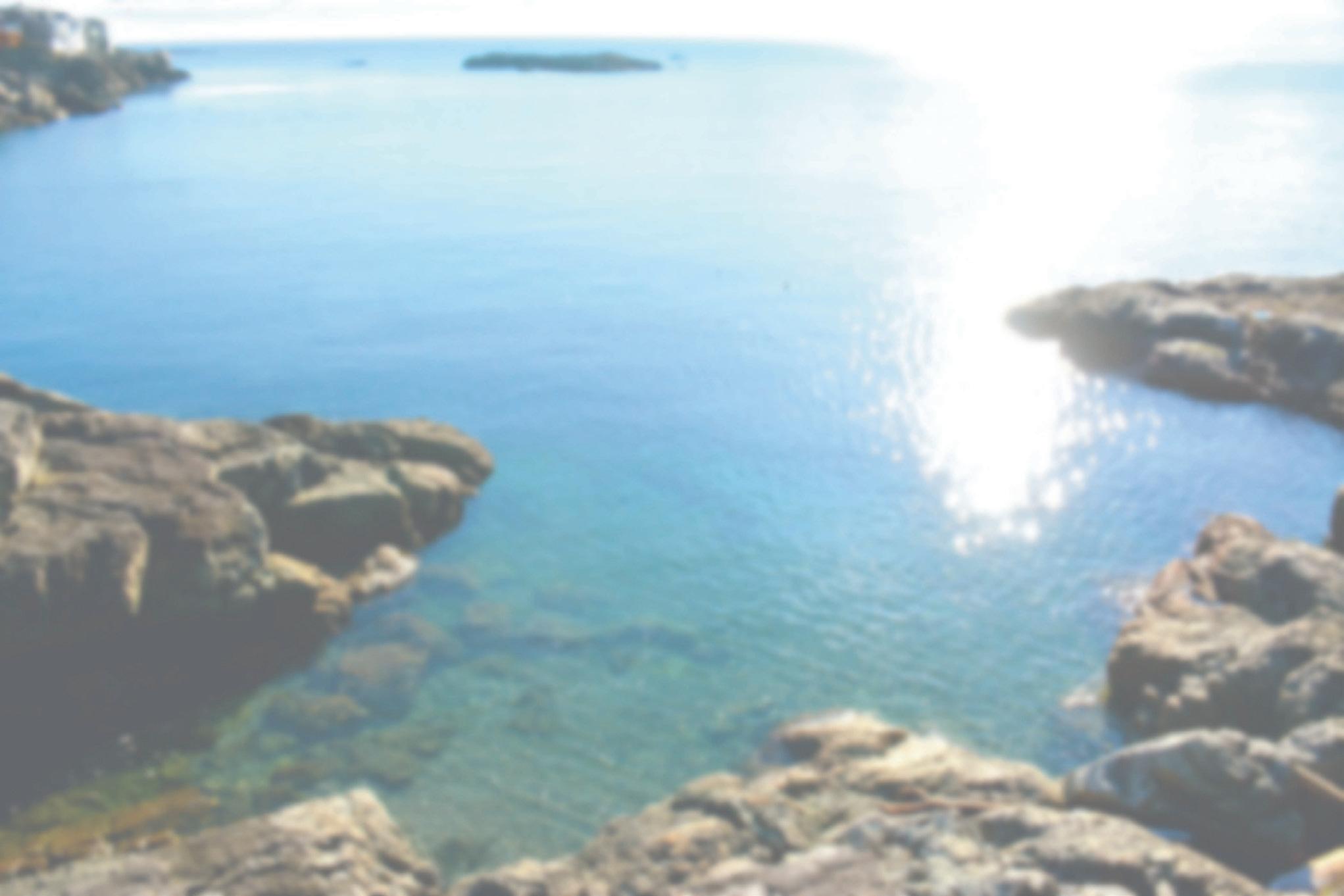
If


 Peter Mallett Staff Writer
Peter Mallett Staff Writer
A famous museum and memorial dedi cated to Canada’s vital role in the D-Day Landings will remain intact thanks to the support from the Canadian government.

On Oct. 7, the Government of Canada announced a $4-million contribution with French municipalities to purchase land adjacent to the Juno Beach Centre in Normandy, France. The land was previ ously sold for condominium development.
“Canadians came ashore at Juno Beach as part of the most ambitious military operation the world has ever seen and helped liberate the continent,” said Lawrence MacAulay, Minister of Veterans Affairs and Associate Minister of National
Defence, in a Veterans Affairs Canada news release on Oct. 7. “This agreement will safeguard and preserve this portion of Juno Beach for future generations.”
Federal government officials in France and Canada, the municipal government of the town of Courseulles-sur-Mer, and the regional government of Normandy contributed to the purchase and preserva tion of the parcel of land identified for the development.
Initial cash payment will cover securing the land from a developer and reimbursing them for complete on-site remediation.
The land will form one site with two adjacent plots, and a 99-year lease will be negotiated.
Minister MacAulay said the investment secures the long-term protection of Juno
Beach and the sites commemorative use. He emphasized it also supports the Juno Beach Centre’s work in honouring the achievements and sacrifices of those who fought for freedom and democracy.

On June 6, 1944, Canadians landed on Juno Beach as part of the D-Day invasion that marked a turning point for Allied forces during the Second World War.
The Centre pays homage to all 45,000 Canadians who lost their lives during the Second World War. The Centre opened in 2003 with a mandate to preserve this legacy for future generations through education and remembrance.
Juno Beach Executive Director, Alex Fitzgerald-Black, met the purchase news with great enthusiasm.
“We are full of gratitude to Veterans
Affairs Canada and all parties involved for coming through and making this commit ment,” Fitzgerald-Black said.
Cindy Clegg of the Save the Juno Beach Centre orchestrated a massive e-mail and letter-writing campaign last March to get the attention of Members of Parliament.
“There were tens of thousands of people who took time to write their Members of Parliament,” she said.
Clegg says over 70,000 letters had been sent when the letter-writing campaign con cluded at the end of June, and it did the trick.
“Saving the Centre was a moon shot at best and I can’t think of a better outcome than France and Canada getting together to solve the problem,” she said.
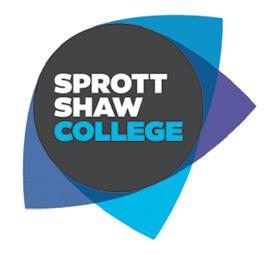
Manager
Jazmin Holdway 250-363-3372 Jazmin.Holdway@forces.gc.ca
editor

Kate Bandura 250-363-3130 kateryna.bandura@forces.gc.ca
Writer
Peter Mallett pkmallett@shaw.ca
ProdUC tion
teresa Laird 250-363-8033 production@lookoutnewspaper.com
Leslie eaton 250-363-8033 workstation3@lookoutnewspaper.com
trina Winters 250-363-3127

advertiSing rePreSentative Joshua Buck 778-977-5433 sales@forcesadvertising.com
editoriaL adviSor Capt Jeff Klassen 250-363-4006

Published each Monday, under the authority of Capt(N) J. Jeffrey Hutchinson, Base Commander.
Le LOOKOUT est publié tous les lundis, sous l’égide du Capv J. Jeffrey Hutchinson, Commandant de la Base.
The editor reserves the right to edit, abridge or reject copy or advertising to adhere to policy as outlined in PSP Policy Manual. Views and opinions expressed are not necessarily those of the Department of National Defence.
Le Rédacteur se réserve le droit de modifier, de condenser ou de rejeter les articles, photographies, ou annonces publicitaires pour adhérer au Manuel des politiques des PSP. Les opinions et annonces exprimées dans le journal ne réflètent pas nécéssairement le point de vue du MDN.


Circulation - 2,000 plus 300 pdf downloads per week


Follow us on Facebook, Twitter and Instagram to join our growing social media community.
A Division of Personnel Support Programs
CFB Esquimalt, PO Box 17000 Stn. Forces, Victoria, BC V9A 7N2 Web: www.lookoutnewspaper.com Fax: 250-363-3015


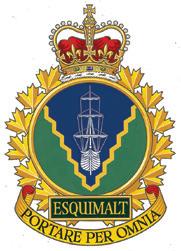
Canadian Mail Product Sales Agreement 40063331



Up Spirits is the traditional pipe tune used to inform a ship’s company to prepare to receive a daily rum ration. Historically, sailors have been given rum to keep them vigorous and able to ward off the chills of the sea environment. Although rum was consumed in the Royal Navy for centuries, the tradition of issuing a tot, the term for the daily half-gill issue of rum, began in 1850.
Once one of the most welcome pipes in a daily routine, the general call followed by the words ‘up spirits’ was normally heard at six bells in the forenoon watch, or 1100, although it could be heard anytime between 1100 and noon depending on circumstances. Each sailor was issued one tot of rum meas ured as a half-gill, a gill being five imperial fluid ounces, and half-gill being 2.5 ounces.
July 31, 1970, is known as Black Tot Day as it was the last day the Royal Navy issued sailors a daily rum ration. For the Royal Canadian Navy, Black Tot Day came two years later, on March 30, 1972. The Royal New Zealand Navy was the last Commonwealth Navy to abolish the practice on Feb. 28, 1990.

Sailors would drink their tot neat, meaning undiluted, or mixed with cola or water. It was also common for sailors to owe a part of their rum issue to a fellow sailor, possibly to settle a debt. They might pay their debt by sharing their rum in a measurement of sippers (take a sip), gulpers (take a gulp), or sandy bottoms (drink it all). Unofficially, three sippers equaled one gulper, and there were three gulpers in an entire tot
The tot may be gone, but the Navy still occasionally
makes a special issuance of rum, referred to as Splice the Mainbrace. Done on special occasions, and marked by the traditional pipe of Up Spirits, the name of this prac tice is derived from the notion that if the mainbrace on a sailing ship required repair, the sailor who made the repair (splice), was rewarded with an extra ration of rum. The signal hoists for Splice the Mainbrace are the flags Bravo and Xray
By definition, grog is rum mixed with water, usually one part rum mixed with two parts water. The term was derived from ‘Old Grogram’, the nickname of Admiral Edward Vernon who was known for wearing a grogram coat. Vernon became notorious in 1740, when he ordered the Royal Navy to water down the rum before it was consumed by sailors. The common English word groggy, which means to be dazed, weak, or unsteady, was derived from the condition of having con sumed too much grog.
An oft-used nickname for rum is Nelson’s blood, derived from the story of how Admiral Horatio Nelson’s body was preserved in a cask of rum aboard HMS Victory after he perished at the Battle of Trafalgar. As the legend states, when the cask arrived back in England, it appeared that the sailors had drilled a hole in the bottom of the cask and the rum had been consumed. Hence, the origin of the term ‘Nelson’s blood’. This tale is widely told, but the details are often disputed, as many historians claim Nelson’s cask contained French brandy. Quel scandale!
You will find over 4,000 examples of Jackspeak in my book Jackspeak of the Royal Canadian Navy (2nd ed.).
The author of Jackspeak of the Royal Canadian Navy and Whiskey 601, Mark Nelson developed a love of the Navy's language and lifestyle over his 26-year career in the service. After retiring as a Chief Petty Officer Second Class, he now works as a Library Systems Specialist at Red River College Polytechnic in Winnipeg, Man.
Follow Mark on Twitter @4marknelson

“Unofficially, three sippers equaled one gulper, and there were three gulpers in an entire tot.”
~ Mark Nelson, Chief Petty Officer Second Class (Retired)
Vice-Admiral Charles Morris
Winton Thomas was the 21st Commander of the Canadian Navy.
Vice-Admiral Thomas joined the Royal Canadian Navy (RCN) as a Cadet in 1954.
From 1954 to 1957, he trained at the Officer Training Establishment HMCS Venture and sea on the cruiser HMCS Ontario. Specializing in Marine Engineering, he studied at the UK Royal Naval Engineering College (RNEC) in 1957. Later that year, he trained in HMCS Margaree. He returned to the RNEC in 1960 for Marine Engineering sub-specialty training.
He returned to Canada in 1961. He served in HMCS
Saguenay and HMCS Antigonish, the latter as the Engineering Officer.
In 1961, he joined the staff of the Commander Fourth
Canadian Escort Squadron in HMCS Jonquière. He served as Squadron Operations and Training Officer.
From 1963 to 1966, he served as Engineering Officer in the ocean escort HMCS New Glasgow. He served in the same role in the destroyer escort HMCS Saskatchewan in 1964.
In 1966, Thomas went to Canadian Forces Headquarters (CFHQ) as Staff Officer Postings and Careers. The next year, he studied at the Canadian Forces Staff College in Toronto.
On promotion to Commander in 1969, he was appointed Executive Officer of the replenishment ship HMCS Preserver. In 1971, he assumed command of the
helicopter-carrying destroyer escort HMCS Fraser.
Thomas went to Maritime Command Headquarters (MARCOMHQ) in 1973.
First, he served as Senior Staff Officer Training. Later, he served as Senior Staff Officer Combat Systems Readiness.
In 1975, on promotion to Captain (Navy), he was made Commander Personnel and Training in MARCOM HQ.
He moved to Esquimalt, British Columbia, as Commander Training Group Pacific in 1976. In 1978, he studied at the National Defence College in Kingston, Ont. In 1979, he was made Director Maritime Requirements
Sea at National Defence Headquarters (NDHQ) in Ottawa.
On promotion to Commodore in 1981, he took language training. In 1982, he became Director-General Maritime Doctrine and Operations at NDHQ.
On promotion to RearAdmiral in 1984, he was named Chief of Maritime Doctrine and Operations at NDHQ. On promotion to his present rank in 1987, Vice-Admiral Thomas was appointed Commander Maritime Command in Halifax, N. S. He returned to Ottawa in 1989 as Vice Chief of the Defence Staff at NDHQ. He returned to Ottawa in 1989 as Vice Chief of the Defence Staff at NDHQ. He resigned from the Canadian Forces in 1991.



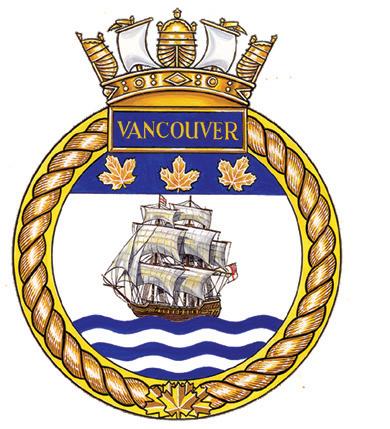
The Royal Canadian Navy (RCN) has become a family tradition for Sailor First Class (S1) Gabrielle Bissainthe, a Naval Communicator in His Majesty’s Canadian Ship (HMCS) Vancouver
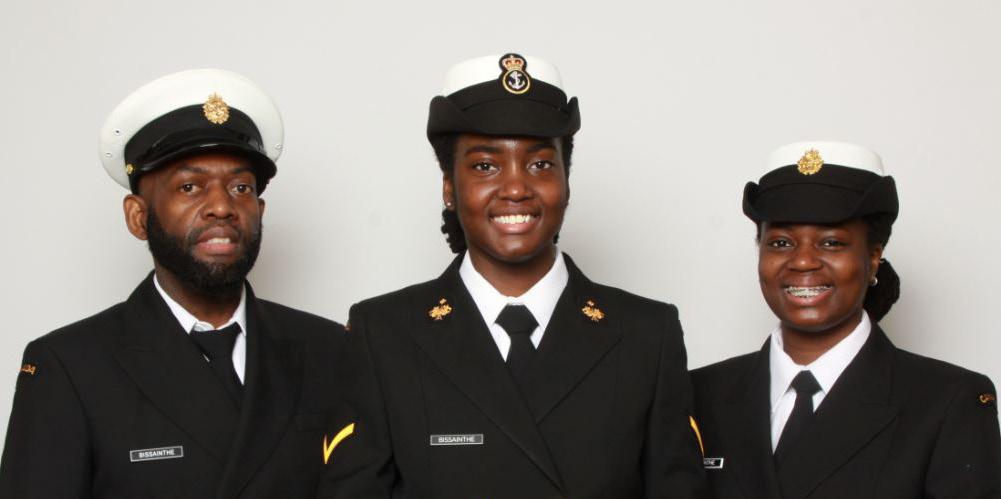
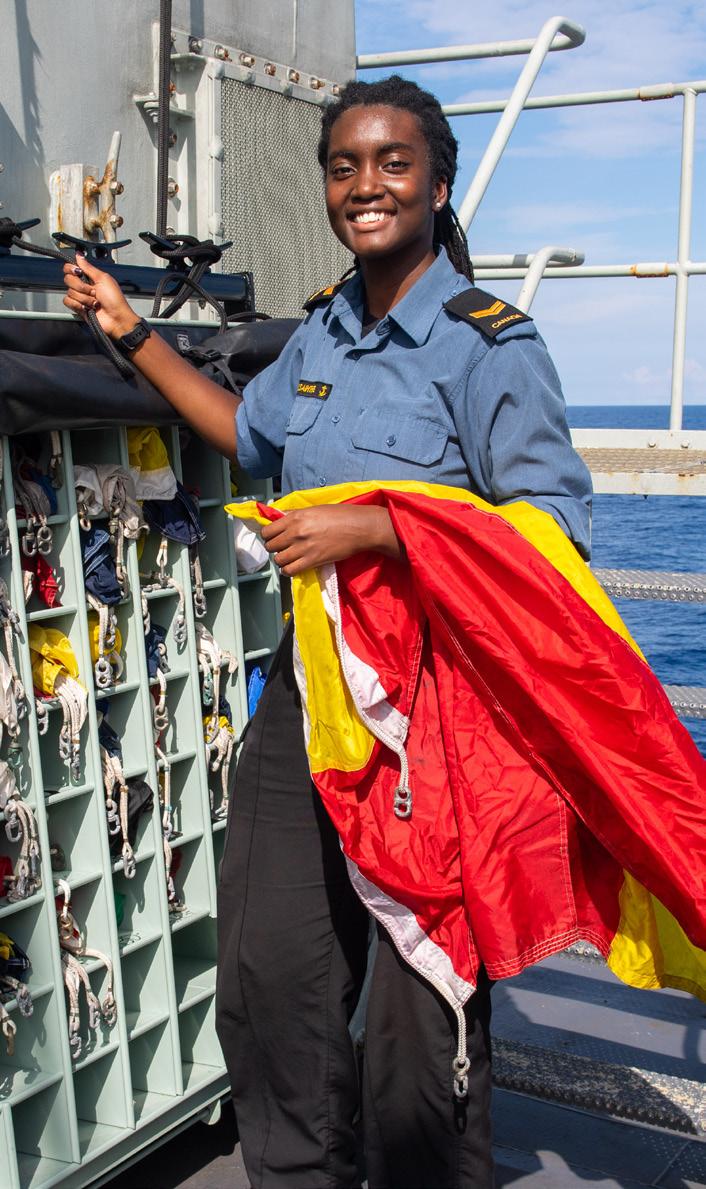
“My dad has shown me it’s never too late to get into the stuff you love,” S1 Bissainthe said.


Growing up in Queens, New York, Bissainthe said she was raised on her father’s Navy stories. When her family eventually settled in Toronto, he suggested she try the Royal Canadian Sea Cadet Corps Vanguard at HMCS York
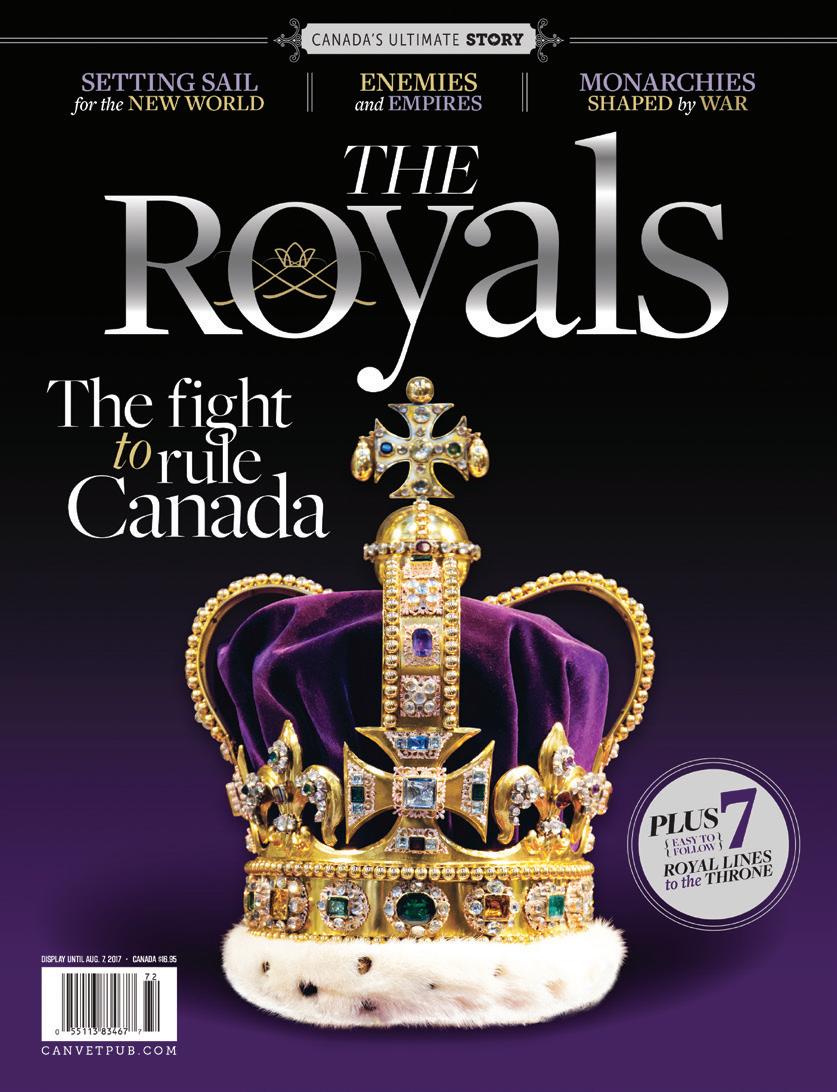
“Gabrielle joined as a cadet at 12-years-old and I would share stories of my time in the Navy with her,” said Sailor Third Class (S3) Paul Bissainthe, her father.
After growing up listening to her father talk about his time as a Gunner’s Mate in the United States Navy, S1 Bissainthe, 22, decided to try it out for herself. What she didn’t realize at the time was who was watching.

Shortly after S1 Bissainthe completed her Basic Military Qualification (BMQ), her sister Kayla joined the RCN as a Human Resources Administrator. Their father fol
lowed suit and joined the Naval Reserves as a Boatswain at HMCS York. He works as an Auto Technician in the civilian world.
“I am more than proud to hear and see [Gabrielle and Kayla’s] journeys so far, and what more they have yet to accomplish,” S3 Bissainthe said.

During her first sail, S1 Bissainthe said she experienced déjà vu, courtesy of her dad –living out firsts in the Navy just like he did.
“I was firing the .50 cal machine gun for the first time and I asked a friend to take a photo of me because I was in the same
position that my dad was in a photo I have of him. I now have side-by-side photos of us doing the same thing,” she said.
S1 Bissainthe is sailing in Vancouver – cur rently deployed on Operations Projection and Neon before an anticipated return to Esquimalt in December. She said she enjoys every minute of it.
“Life at sea shows it is the little things like snacks from home that are important. It really doesn’t take a lot to make you happy,” she said.



 Kateryna Bandura Lookout Editor
Kateryna Bandura Lookout Editor
HMCS Vancouver’s Dive Team is mak ing true the old adage, one person’s trash is another person’s treasure.
“Some of the fishing lines we have found tangled on our blades and propel lers were cut and we are making them into bracelets,” said Sub-Lieutenant (SLt) Ryan Gan, Vancouver’s Dive Officer.
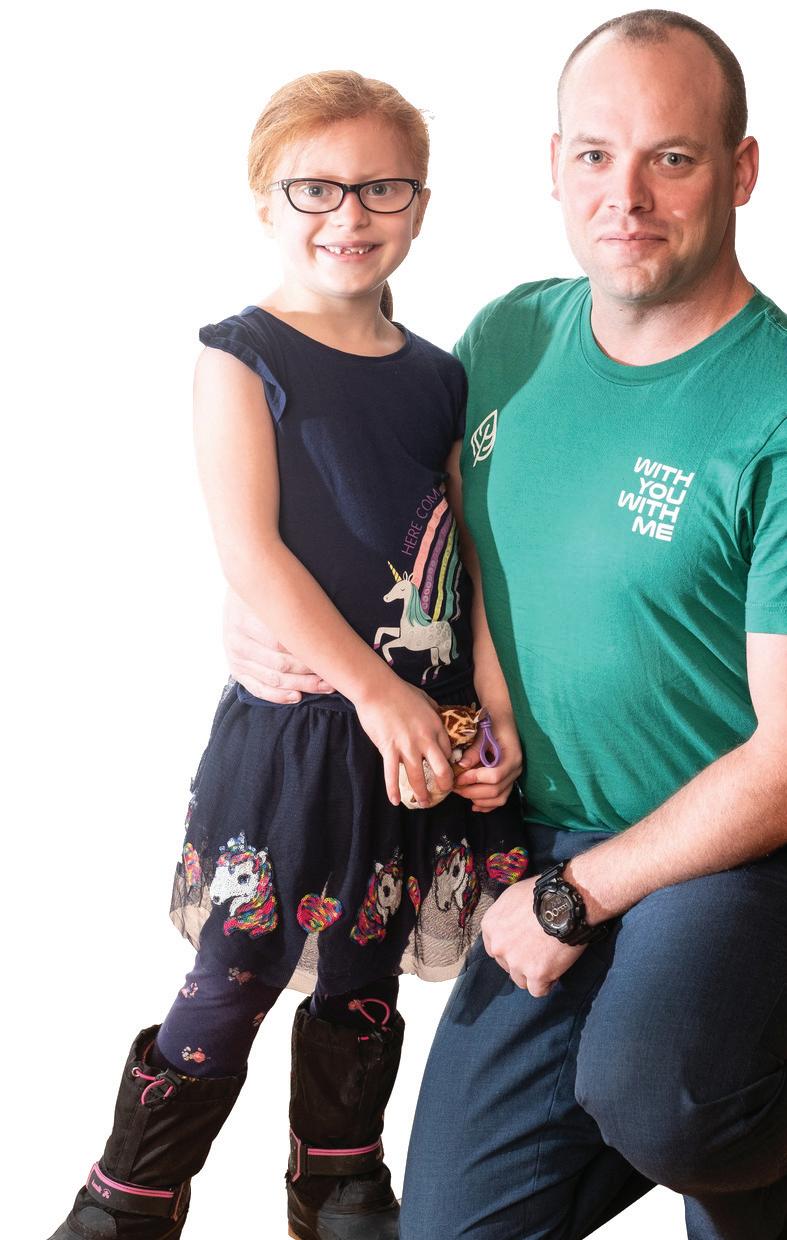
Free-floating fishing nets can be very difficult to spot, and if run over, could potentially damage a ships’ propellers, Vancouver’s Dive Team found a use for pesky hazard, which is surprisingly a fairly frequent occurrence when operating the high seas.
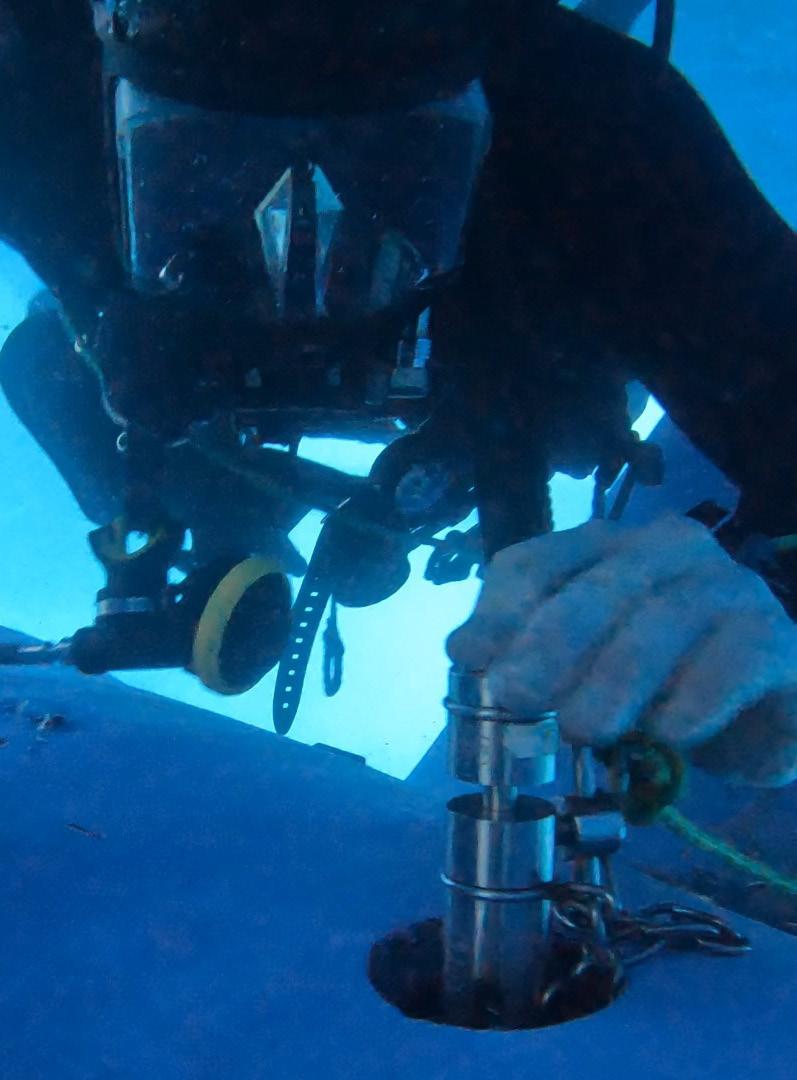
The Dive Team collects such souven irs, if found, during routine mainten ance and hull inspections every time ship gets into a port. Currently, HMCS Vancouver is deployed in the Indo-Pacific on Operation Neon, Canada’s contribu tion to enforcement of U.N. Security Council (UNSC) sanctions on North Korea.
SLt Gan said routine maintenance hull inspection is no easy task.


“With anything involving diving, under water is always a hazard to our divers,”



mak trash have propel them (SLt) very could yet the fairly on souven mainten the HMCS Indo-Pacific contribu Security North and under SLt

Gan said. “Dangers include equipment failure, getting caught when under the ship, or something turning on when it should be off.”
The team meets with the ship’s Marine Systems Engineering and Combat Systems Engineering departments before every dive to ensure divers’ safety. An announcement broadcast throughout the ship every 15 minutes reminds the ship’s company of activity under water, and Flag Alpha, a white and blue flag, signal to other ships visually that there are divers underneath.
“If other ships are nearby, such as in for eign ports, as the Diving Officer I would go over to the other ship with my senior diver and a translator (if required) to ensure everyone is on the same page with what is going on,” SLt Gan said.

The inspection takes about an hour, he said. Since the diving evolu tions only require divers, the rest of the ship goes about their regular tasks and jobs.
Routine maintenance and hull inspection have a few steps, SLt Gan
said.
The divers look at the wear and tear of the shafts that propel the ship, and inspect the blades and rotating mechan ism for excess damage and chipping. To check the wear of the turning shaft, they use a ‘poker gauge,’ which measures how much the shaft has worn down due to the spinning motion. They also inspect the rudder.
“We look for things like indications of damage or chips,” SLt Gan said. “These are filmed and brought to Marine System Engineers for their records and further action.”

The divers also inspect suction grates throughout the ship’s hull – these suck in water to provide cooling to the machin ery onboard. When ships drive through congested waters and busy ports, these grates can get clogged by garbage, lines, and marine growth. The divers remove the gar bage and bring it up for disposal.
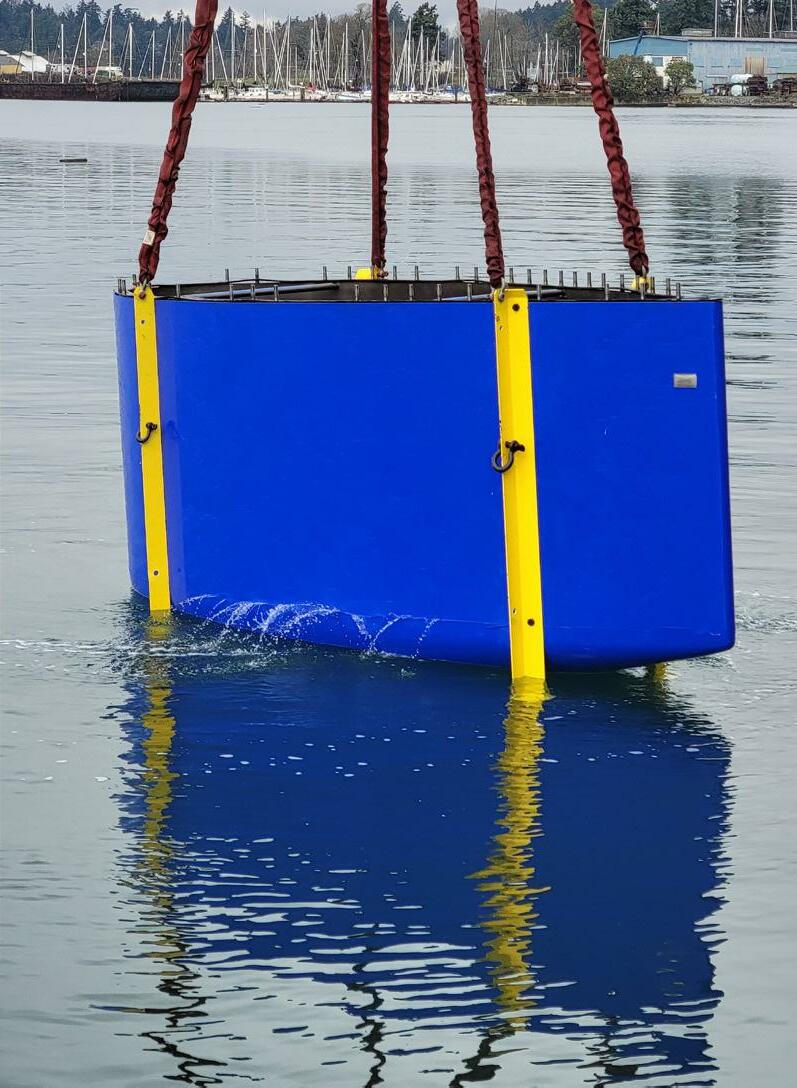
While some mainten ance is as easy as remov ing nets with a knife, other requires specialized
equipment, such as when maintaining the ship’s sonar dome.

The sonar dome is a large bathtub piece in front of the ship, which protects a sonar system. Due to its location, con stant water running past the dome some times loosens the bolts, which can inter fere with the ship’s Sonar Operators’ job.
“We need to ensure the bolts that hold the prongs along the dome’s top lip are tight so they do not cause excess noise and allow the ship’s operators to use the sonar efficiently,” SLt Gan explained.
Typically, it takes a minimum of two divers to complete the inspection. SLt Gan said he often tries to incorporate as many non-divers from the ship’s company as possible to expose them to what they do and possibly recruit new divers.
“The more divers we have, the more we can achieve and the faster the jobs can get done,” he said. “Become a Navy Diver, it’s cool and fun!”
Any trade on ship can apply to join the ship’s dive team as a secondary duty. For information on how to become a Ship’s Team Diver visit Fleet Diving Unit (Pacific)’s webpage and click on ‘How to Become a Diver’: esquimalt.mil.ca/fdu/ Training/howtobeSTD.htm
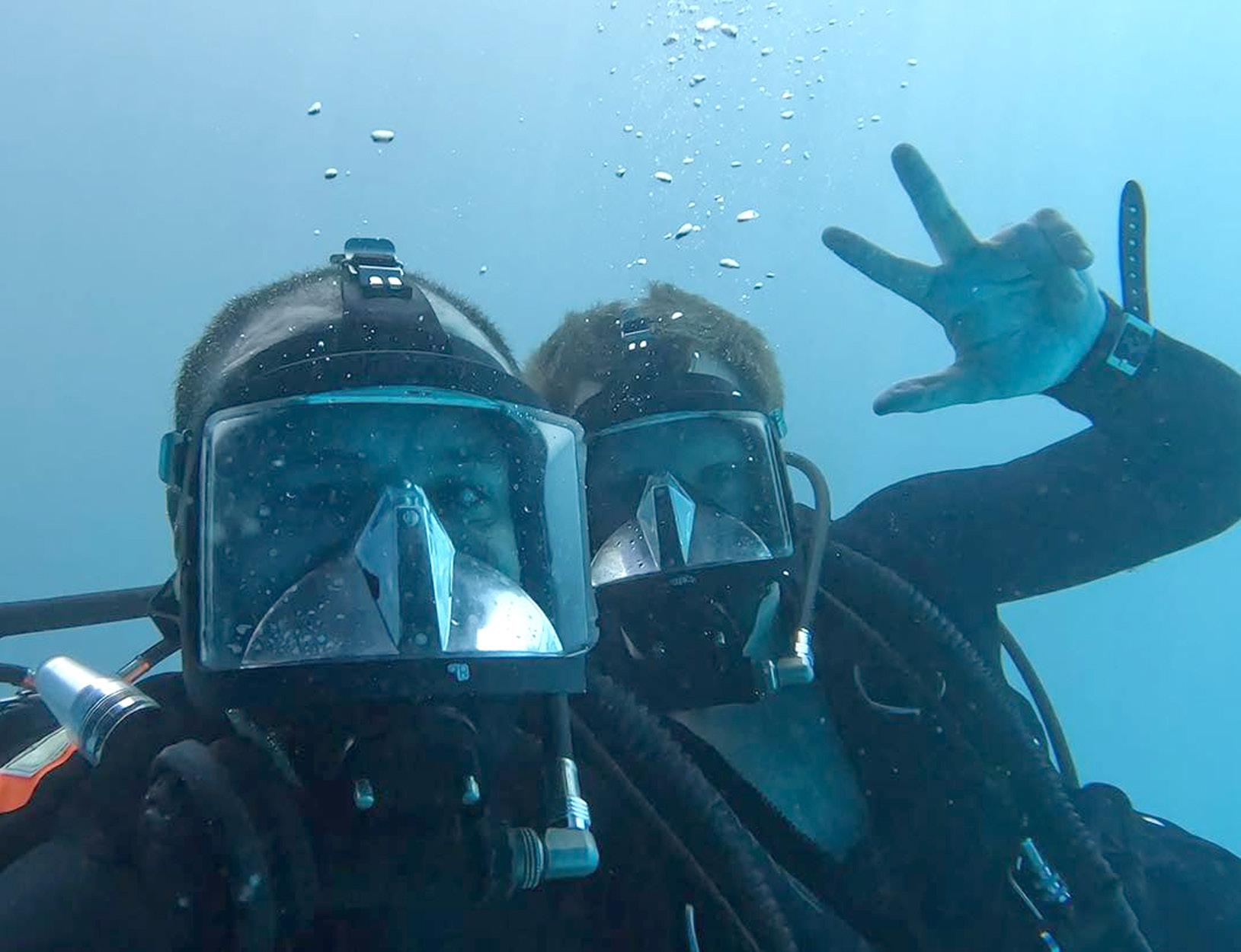









The help has been coming in non-stop. Naval Reservists at HMCS Queen Charlotte in Charlottetown, Prince Edward Island, say recovery efforts have continued non-stop after tropical storm Fiona hit Saturday, Sept. 24.
“People feel scared after something big happens, but it’s calming to see the military arrive to help,” said Sailor Third Class (S3) Katlyn Berkelaar. “It’s better than just sit ting at home.”
It’s not the first time she has seen the mil itary spring into action after a natural disas ter. Members helped out after massive forest fires swept near her hometown of Williams Lake, B.C., back in 2017. S3 Berkelaar, a student at the University of Prince Edward Island, said the P.E.I. clean-up is a tough job, but one she is glad to be a part of.

S3 Chad Dunsford, another Reservist with HMCS Queen Charlotte, said the recovery effort is tiring but that he found a lot of satis faction in it.
“Helping out domestically in efforts such as this was one of the big motivators for me in joining the military,”
S3 Dunsford said. “It has been amazing to watch how quickly
everything came together. It’s been really inspiring in a difficult time.”
S3 Dunsford works at the cruise ship terminal in Charlottetown for his day job With all cruises cancelled after the storm, S3 Dunsford said he could help right away, providing general security and assistance to the 5th Canadian Division (5 Cdn Div) members that moved in to HMCS Queen Charlotte to help.
As more than 60 members of 5 Cdn Div arrived, HMCS Queen Charlotte acted as an ‘operational and support base’, explained Acting Sub-Lieutenant (A/SLt) Scott Ferris, Public Affairs Officer with HMCS Queen Charlotte. The drill deck and various rooms at the stone frigate were turned into living and sleeping quarters for the soldiers, while the galley served up hundreds of meals.

A/SLt Ferris said the clean-up effort is a ‘massive undertak ing’ as P.E.I. dealt with ‘literally tens of thousands of trees down across the Island, damage to roads, bridges, wharves, and harbours’.

After requests for military help came in from P.E.I., Nova Scotia, and Newfoundland and Labrador, hundreds of Canadian Armed Forces members have been assisting in post-storm relief efforts.
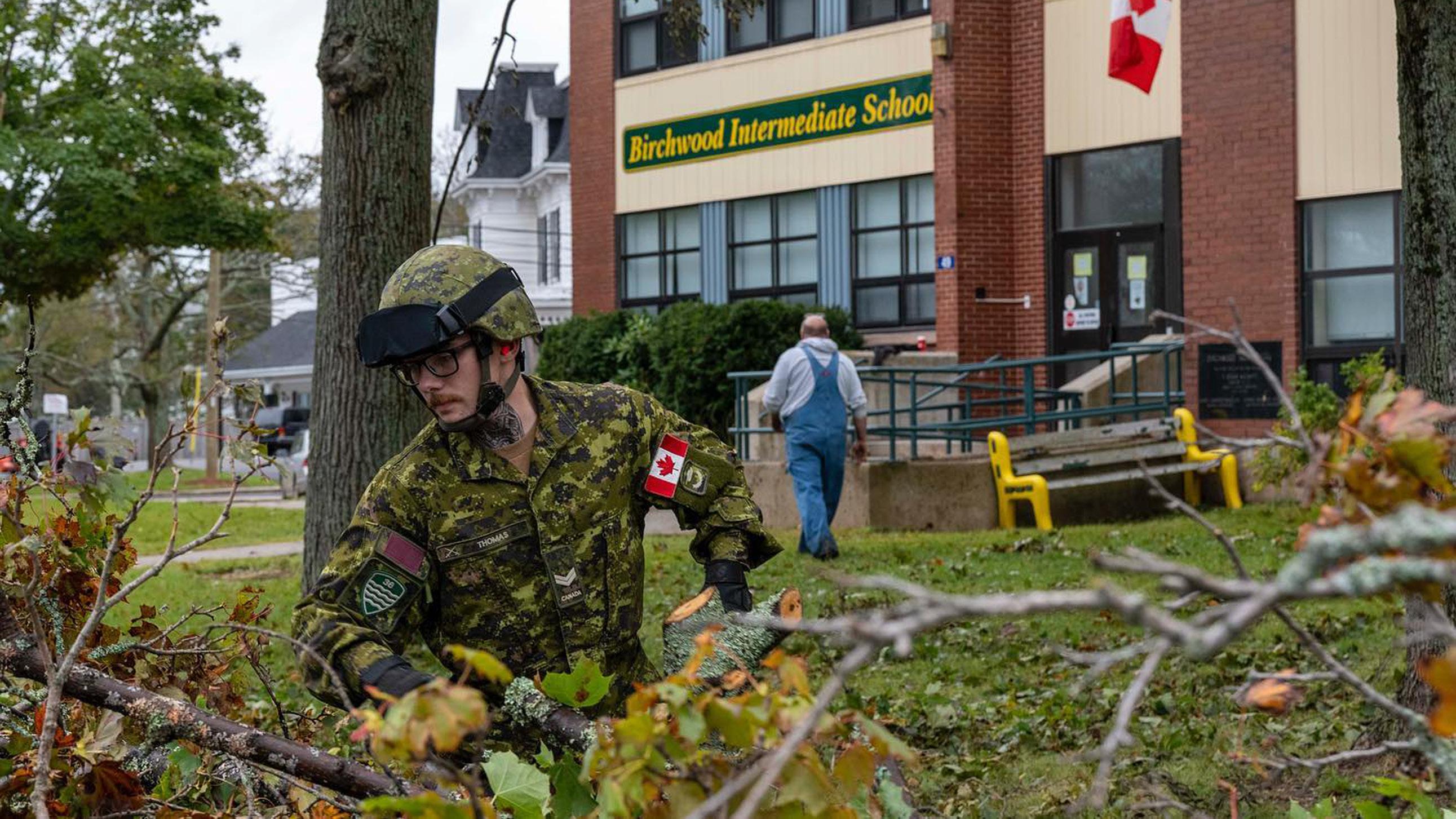








Commander Annick Fortin was raised in Trois-Rivières, QC. She graduated from Polyvalente Chavigny High School in 1991 and immediately joined the Canadian Armed Forces (CAF), looking for adventure and the opportunity to serve her country.
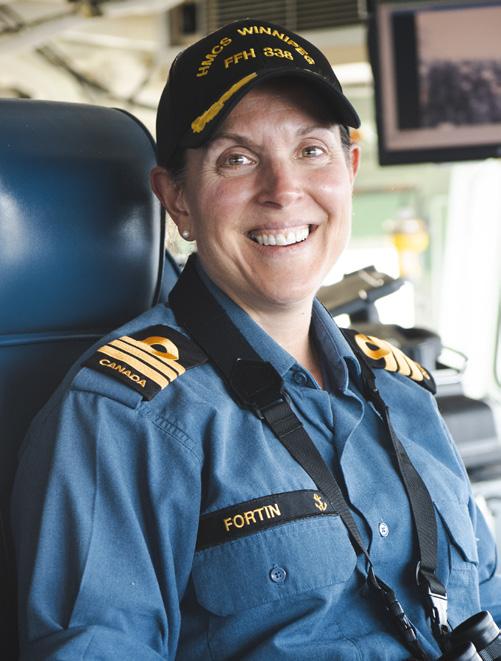
What is your military background?
I attended the College Militaire Royal (CMR) de St. Jean, QC., and Royal Military College in Kingston, Ont., earning a Bachelor of Arts in Business Administration and Commerce. Each summer, I was sent to Canadian Forces Base Esquimalt to conduct the various levels of Naval Warfare Officer (NWO) training.
Following completion of university and my NWO training, I first served in the fleet as a Bridge Watchkeeper.
As my career progressed, I started to specialize as an Above Water Warfare Officer, Deck Officer, Operations Room Officer, Executive Officer, and finally, Commanding Officer.
I also earned a Master of Defence Studies from Canadian Forces College in Toronto.
Which ships have you served in?
I have served on various Royal Canadian Navy (RCN) ships, from destroyers to frigates.
I also worked ashore at Sea Training (Pacific), Canadian Forces Recruiting Centre Vancouver, Strategic Joint Staff, Director General Naval Force Development Office, and Naval Fleet School Esquimalt, first as the Fleet Support Training Officer and returning as the Commandant in 2019.
Which Operations did you take part in?
During my times at sea, I deployed as part of Operation (Op) Apollo in response to the 9/11 terrorist attacks, Op Altair in the Persian Gulf, Op Podium in support of the 2010 Vancouver Olympics, Op Reassurance and Op Sea Guardian, NATO’s marine security operation in the Mediterranean Sea.
What does the role of a Commanding Officer entail?
I assumed command of HMCS Winnipeg in March 2022, the first

My most memorable moment in the CAF is ... “Being here today, commanding my own ship on a deployment, representing Canada and being able to work side by side with amazing people, knowing that they trust me to bring them home safe!”
~Commander Annick Fortin, Commanding Officer of HMCS Winnipegfemale Commander of a major Royal Canadian Navy warship on the West Coast. Since then, I have led the ship and the crew through intense pre-deployment training and preparations, and finally, departing on the actual deployment in the South China Sea as part of a sixmonth deployment on board HMCS Winnipeg.
As the Commanding Officer, I am responsible and accountable for the safety of the ship and the crew; by providing overall direction and guid ance to carry out our mission. What is your favourite part of your job?
Everything! Being part of a team that can accomplish amazing things across a wide spectrum! Leading, tak ing risks, making a difficult decision, representing Canada, seeing success, appreciating resiliency and dedica tion, motivating, mentoring and developing our future sailors, leading the way, being a role model, being humble, listening to the stories, being in the moment without forgetting the future, but enjoying and being grateful for every challenge, success, experience and everyone that I have had the honour to serve with. I love it all!
Want to rent your place?


a space? proMote your group?
Email your FrEE ClassiFiEd* , 50 words or fewer, to Trina.Winters@forces.gc.ca










House For Rent Restored 1904 Heritage house. $2,300/month including Utilities. Contact Geoffrey 250-883-7632.
Family friendly 3 bed home near Uptown. Full access to back yard and garage/shop space. No smoking, no parties. $2900 +utils (heat pump). 1 bed suite below rented to a long term tenant. Pets considered. Available Dec. 1. Call/text Robyn 250-508-0536 10-31
Naval Officer’s Mess Dress for Sale: Doeskin mess dress that includes a complete formal mess dress with a white jacket and a blue vest as extra pieces. Made in Halifax. For more details contact Bruce Winter @ 250-415-5784 (text or call) or labs4ever@ gmail.com. $400 OBO. 10-17
Join members from the Osside Institute on October 27th during Mentorship and PD ses sion #5 to discuss Emotional Intelligence EQi & Leadership
Royal Canadian Navy (RCN) sailors – Regular and Reserve Force – at all ranks and civilian employ ees at all levels are invited to the next session of the RCN’s Mentorship Program: Date: Thursday, October 27th Time: Noon to 1:30 p.m. EST Location: Microsoft Teams
The program is also open to all Canadian Armed Forces personnel and all Department of National Defence civilian employees. The recordings can be found on the SharePoint page: collaboration-navy. forces.mil.ca.
These sessions will be available to all on Microsoft Teams, and everyone is encouraged to participate actively, share their insights and ask questions. For more information, visit the Mentorship Program’s intranet page: rcn-mrc.mil.ca/en/mentorship.page
Joignez-vous aux membres de l’Institut Osside le 27 octobre lors de la séance no 5 du Programme de mentorat et de PP pour discuter de l’intelligence émotionnelle (EQi) et du leadership




Les marins de la Marine royale canadienne (MRC) – Force régulière et Réserve – de tous les grades et les employés civils de tous les niveaux sont invités à la prochaine séance du Programme de mentorat de la MRC :
Date : Jeudi 27 octobre



Heure : Midi à 13 h 30 (heure de l’Est)
Lieu : Microsoft Teams

Le programme est également ouvert à tout le personnel des Forces armées canadiennes et à tous les employés civils du min istère de la Défense nationale. Si vous ne pouvez pas venir, ne vous inquiétez pas, les enregistrements sont offerts à la page SharePoint : collaboration-navy.forces.mil.ca
Ces séances seront accessibles à tous sur Microsoft Teams et tout le monde est encouragé à participer activement, à présenter ses idées et à poser des questions.


Pour plus de renseignements, consultez la page intranet du Programme de mentorat : rcn-mrc.mil.ca/en/mentorship.page






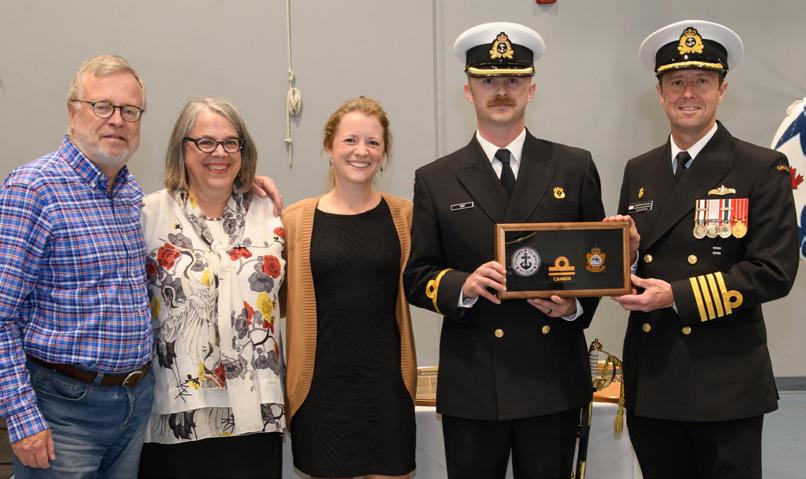
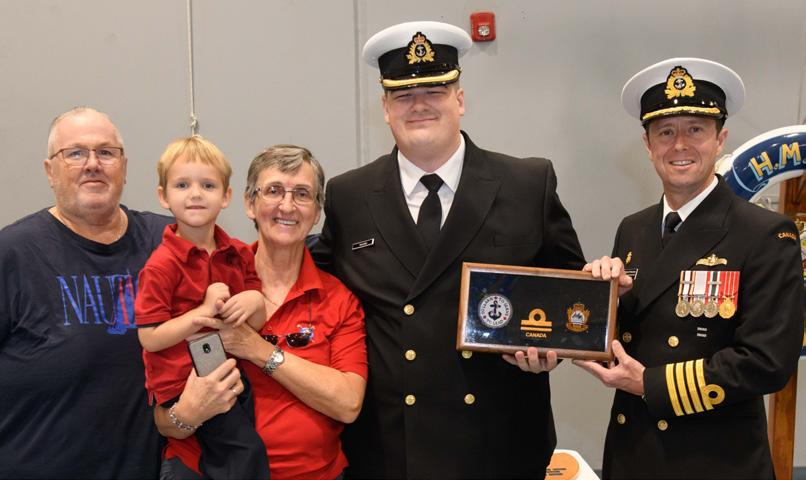
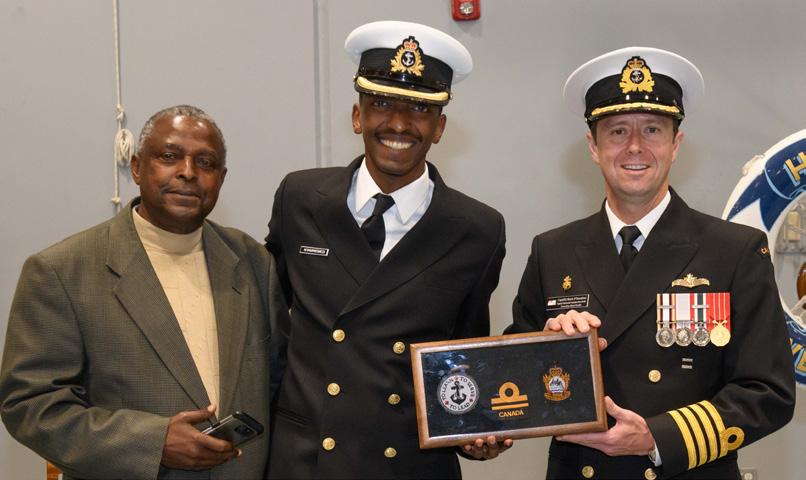





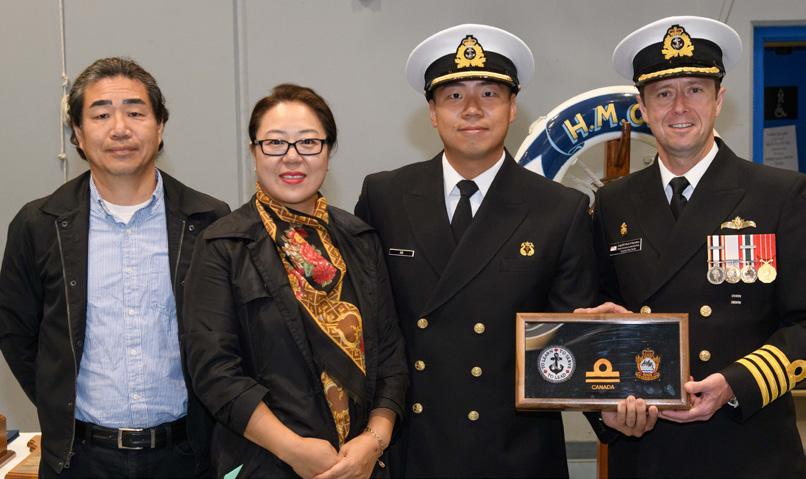
Sub-Lieutenant Miriam Tremblay (second from right), accompanied by family members, is promoted to current rank.
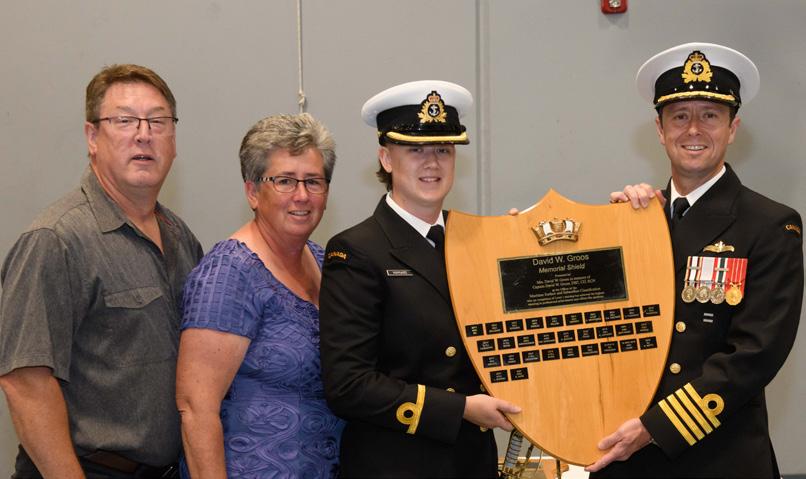
Sub-Lieutenant Ian Verstappen (center), accompanied by a family member, is promoted to current rank.


Sub-Lieutenant Tim Say (second from right), accompanied by family members, is presented with the Chief of Maritime Staff Award for top overall student.
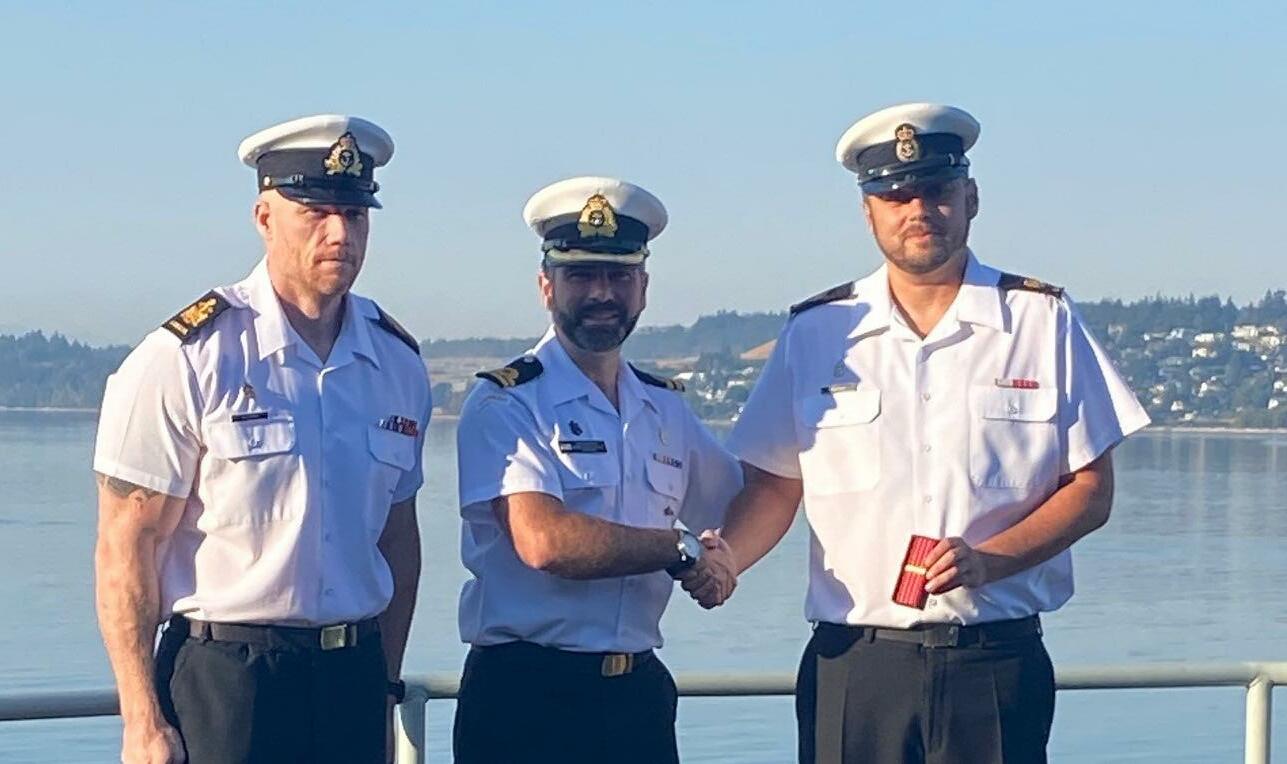





River-based Sunshine
Health Centre
Strait Womens Clinic
highly personalized



mental health and trauma treatment for male and female clients
daily 1-on-1 inpatient or outpatient treatment tailored to

unique needs.


include 24 hourmedical service, psychiatric assessment, EMDR, rTMS, psychotherapy, hypnotherapy



much more.
the Department of National Defence and Veterans Affairs Canada since 2009.